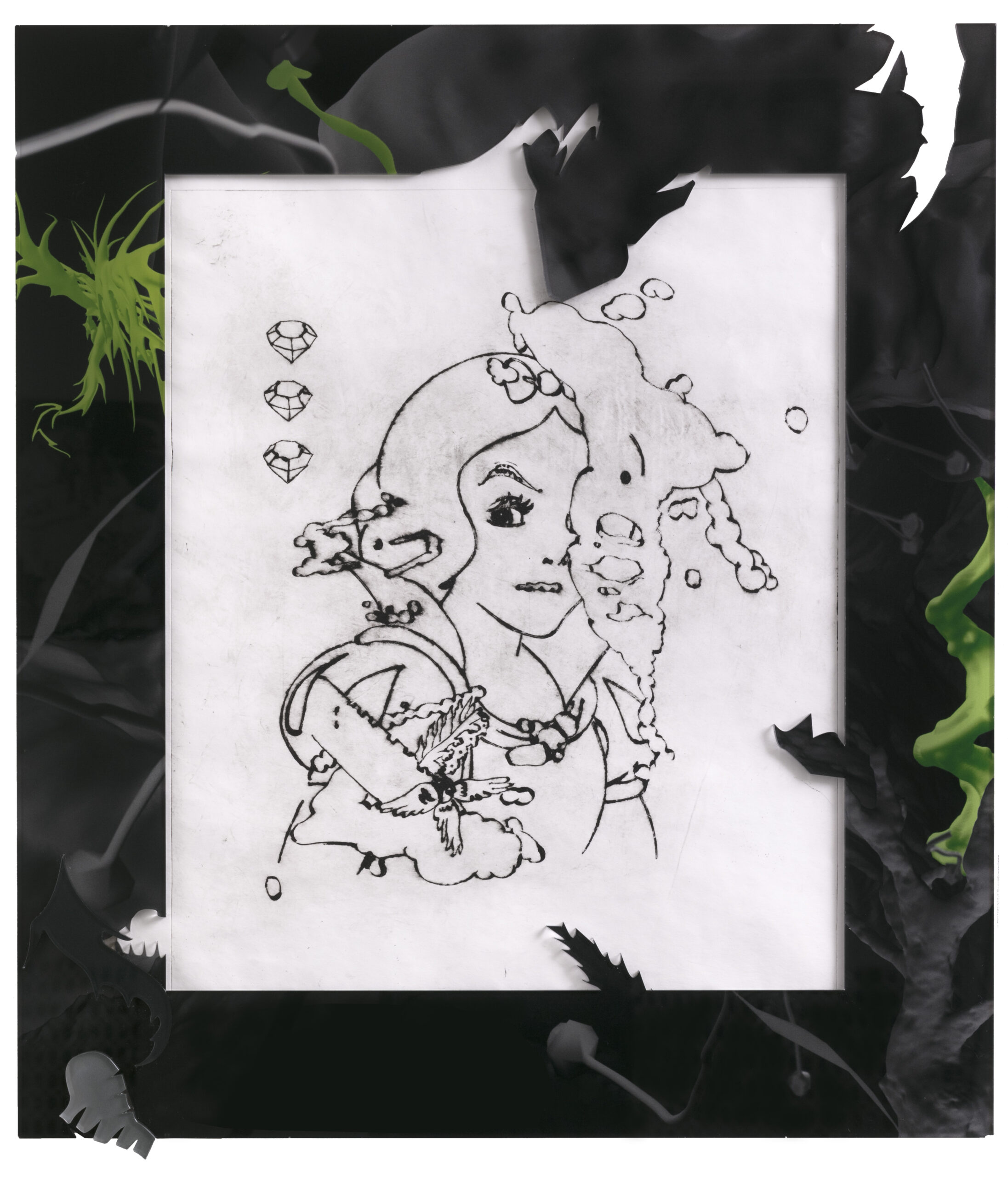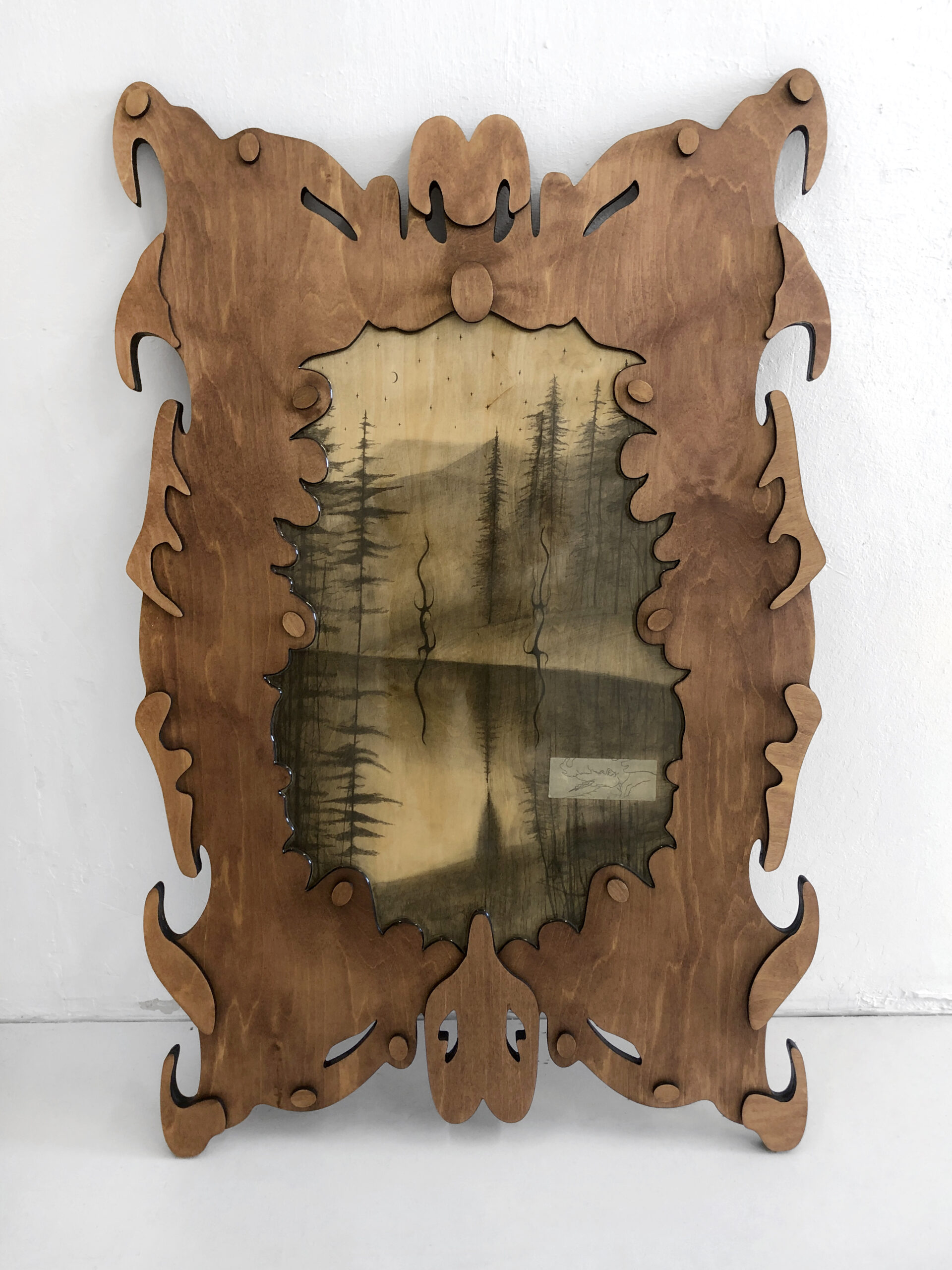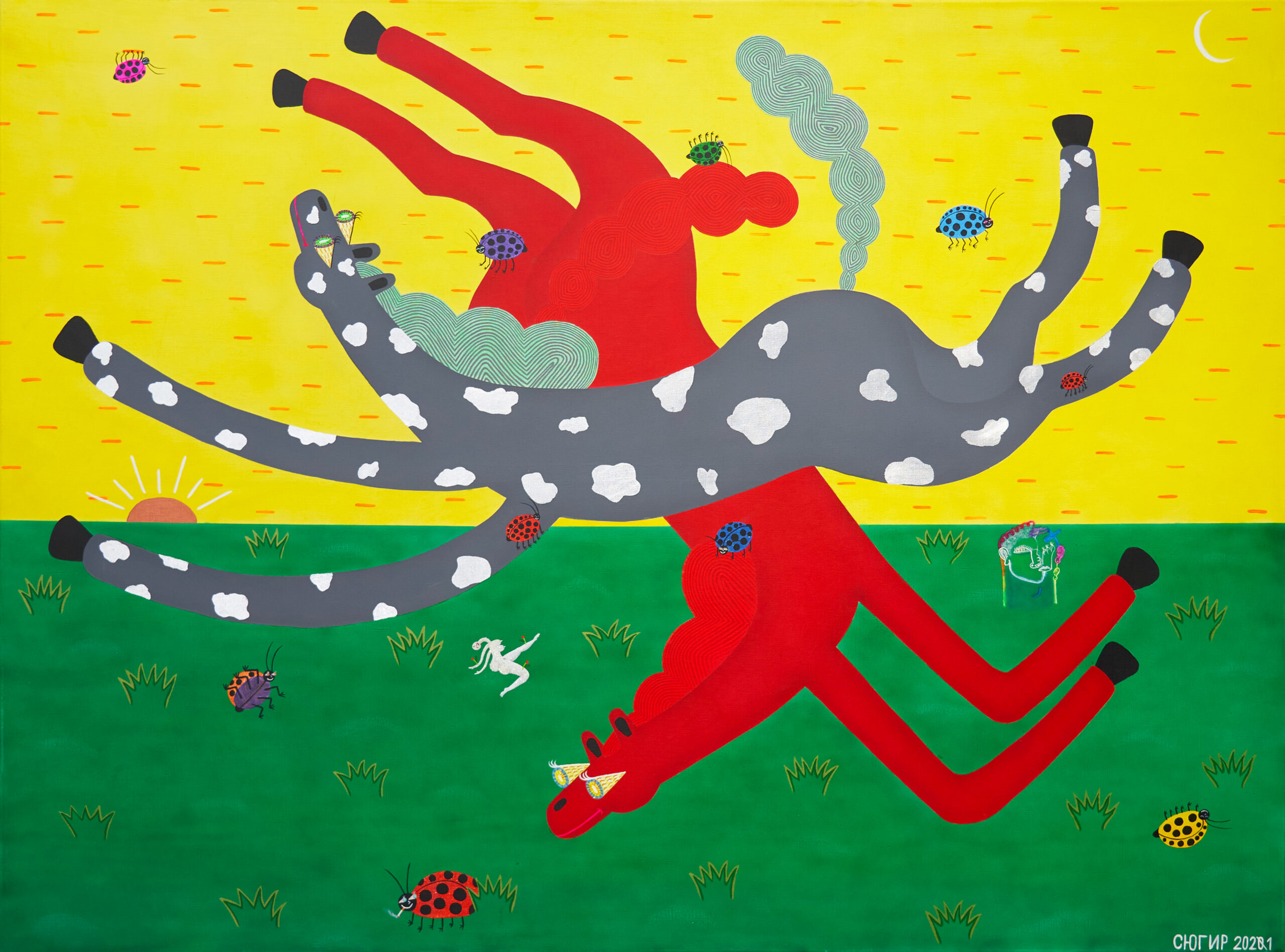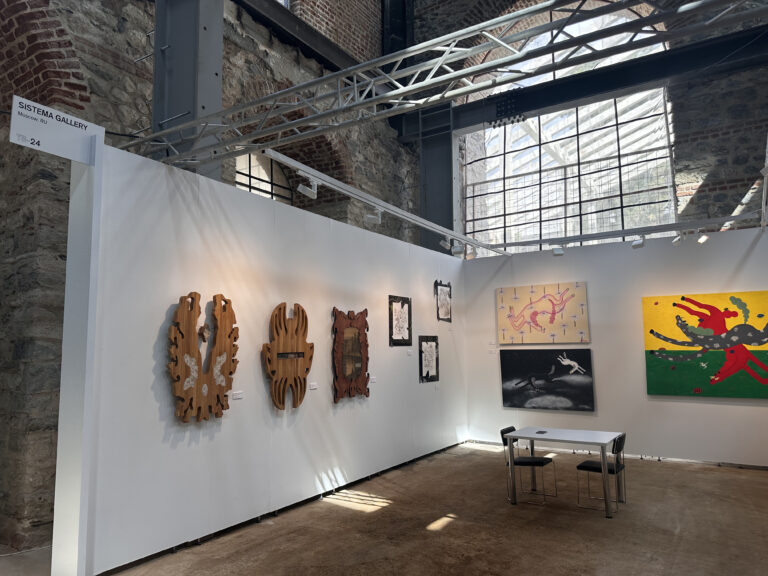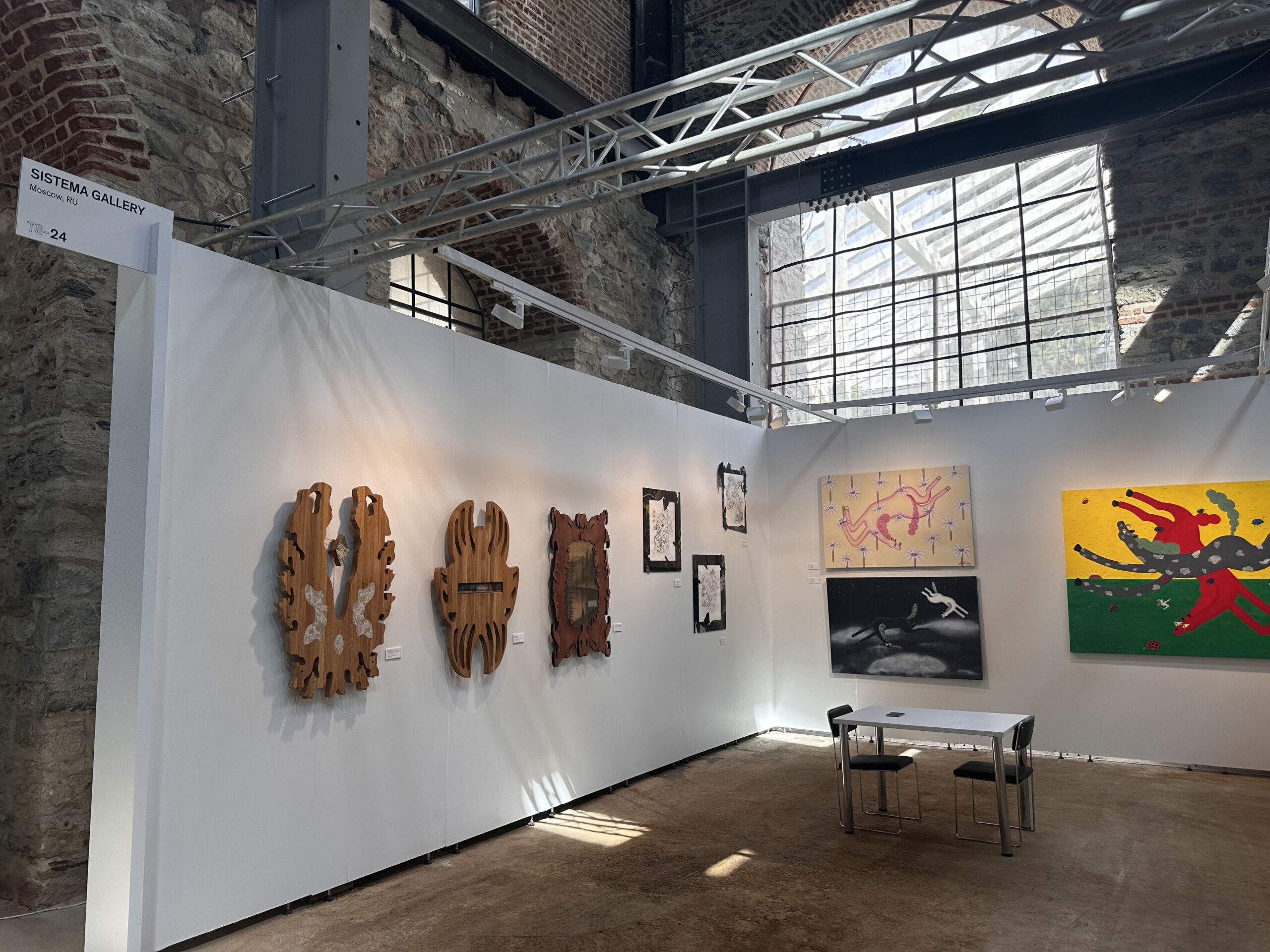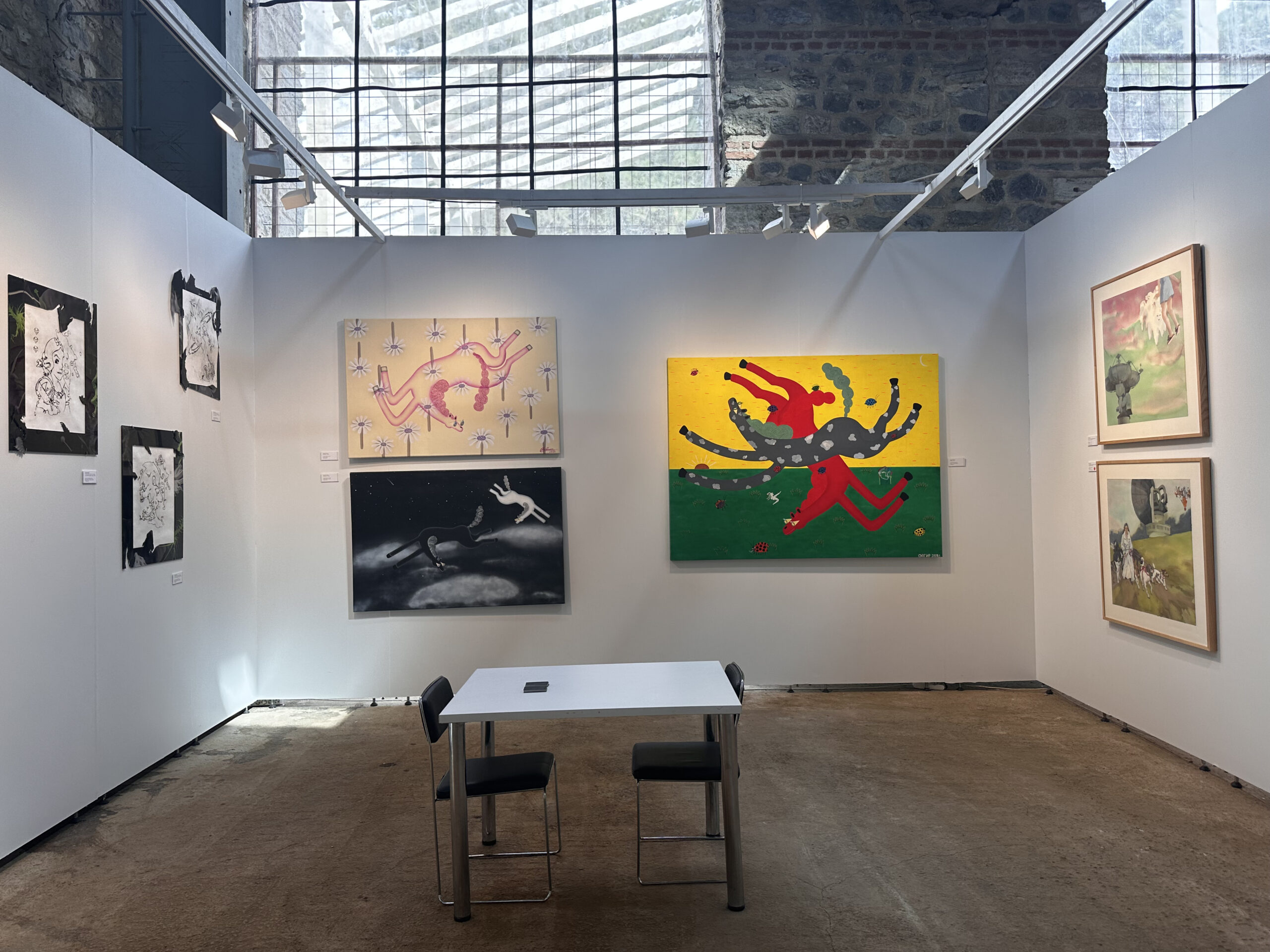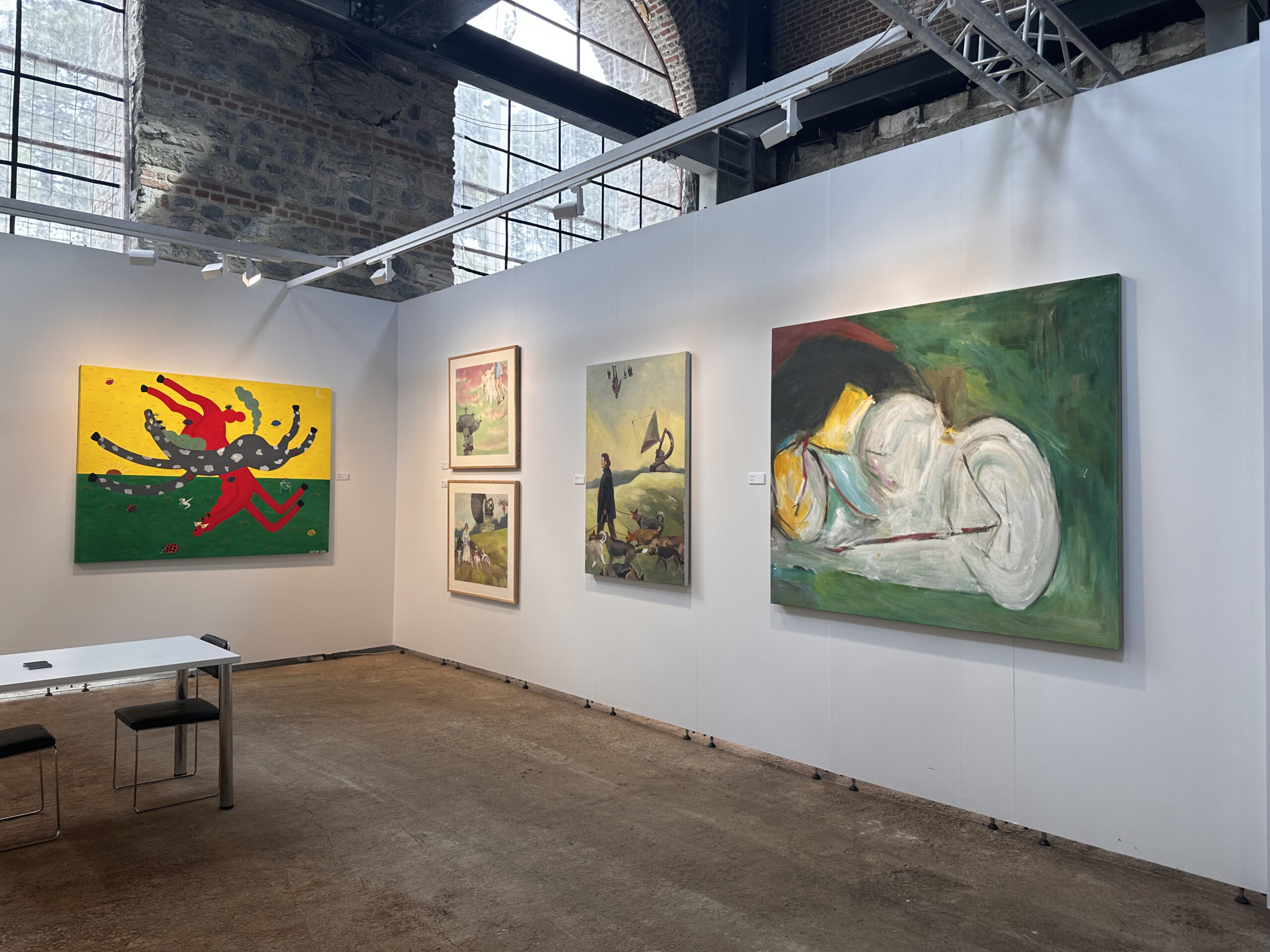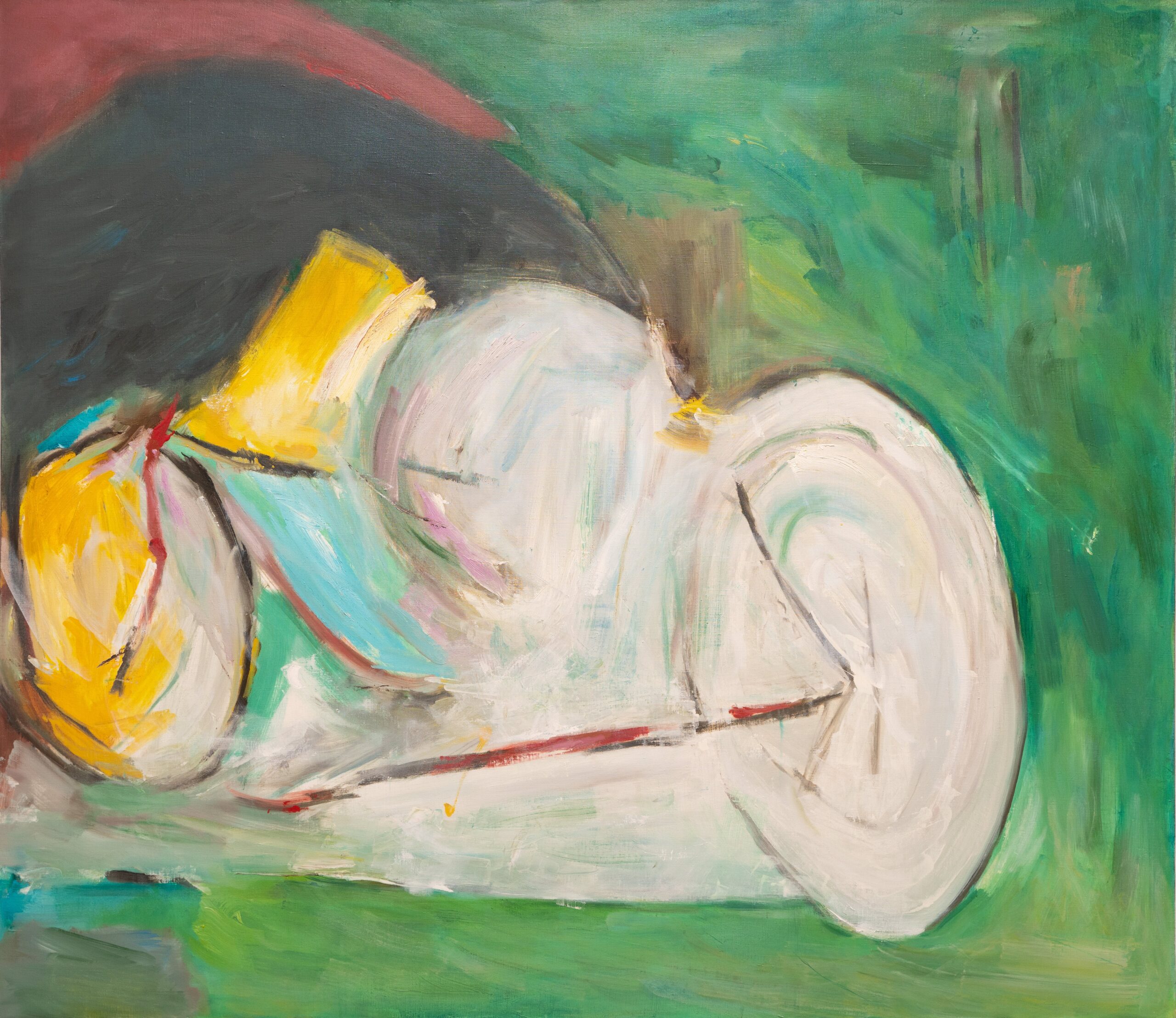FAIR DESCRIPTION
SISTEMA GALLERY participated in the 18th International Contemporary Art Fair “Contemporary Istanbul”, which was held at the historic shipyards in Istanbul from 28 Sep to 1 Oct 2023. Stand number T8-24.
The artists: Alina Kugush, Slava Nesterov, Sasha Puchkova, Syugir Buluktaev, samuill marshak.
The stand presented artworks from the projects of the five artists. Slava Nesterov made sculptures from far-eastern oak from a series based on the “Perm animal style” specially for the fair. Alina Kugush exhibited paintings and graphics from the new series “Alternative Methods of Travelling (AMT)”. The stand also displayed works from the artists’ solo exhibitions held at the gallery in 2023: “Something is wrong with this kingdom” by Sasha Puchkova, “TA-TA-TA” by samuill marshak, and “Horse-Tulip” by Syugir Buluktaev.
ALINA KUGUSH
Alternative Method of Transportation (AMT)” is a series of painting and graphics with different situations with soviet radiotelescopes. Although the concept is complex and deep, the artworks are very gentle and colorful.
These are artworks about an interesting phenomenon of one period of Russian history. In the USSR (1917-1992) there were a lot of scientific and technological projects, whose final goal was unknown for people and also for employees who worked on those projects because most of them were secret. There were a lot of specific buildings around the country: institutions, factories, bomb shelters and closed secret scientific towns. The government had been building them a lot since the 1950s to the late 1980s. They still exist but they are still unexplainable for people, also we always hear about some sectrec documents from the Soviet period, and all these facts make people create conspiracy theories.
In the late USSR there were a lot of movies about such pseudo scientific things such as the movie “Zero City”, book-on-films by the Strugatsky brothers and the like. In these films we can see such Soviet secret closed towns where strange things happen.
In fact in Soviet society there was the cult of the power of technical sciences which had been grown by political propaganda since the 1950-1960-s. There were a lot of scientists and research assistants for nuclear development and the military-industrial sector.
A large number of radiotelescops (about 20 against 1-2 in other countries) had been built for the whole period of the late USSR – about 70-80s. They are not just an artifact of the Cold war legacy (which was between USA ans USSR and everybody afraid of the Atomic bomb), but also a myth about “The Soviet mysterious”, strange unexplained things with different ways of interpretation.
In this project the artist interprets telescopes as a reason for mutation and distortion of space and reality. In fact telescopes generate alternating magnetic and electric fields. Maybe the characters prefer to hit the heels twice like the fairy-tale Doroty and appear in normal reality (course of time). But they can’t and are forced to adapt to alternative methods of existing and moving.
The series of paintings and graphics show some numbers of cases (situations) with Soviet radio-telescopes. The heroes of artworks “Case №2”, “Case №34”, “Case №11” are not just people with different ties of leashes with dogs but also the heroes here are telescopes from Pulkovo and Klyazmin (towns) observatories and the antenna with a gentle name “Romashka” (daisy) from a scientific-research ship “Cosmonaut Victor Patsaev”.
The groups of these people and dogs are in different dynamics in the pictures and drawings. Some leashes between the characters and dogs are very strained and remind of the strain of antennas in radiotelescops. Some of these groups are more relaxed and one of them, “Case 11”, reminds of Doroty from “The Wonderful Wizard of Oz”caught and blown away by the wind.
SLAVA NESTEROV
Slava Nesterov, an artist with Bashkir roots, comes from the city of Perm, Middle Urals. The Middle Urals is a place where different cultures intersect: Finno-Ugric, Tatar, Bashkir, Russian, which is reflected in the artist’s practice. The aesthetics of the works is based on Permian animal style. Permian animal style is a generalized name for bronze figurines found in the Urals and Western Siberia, presumably created by Ugrian tribes in the 3rd-12th centuries AD.
Wooden or metal figures and the spirits encased in them become a divine product made of wood or metal. Kustaa Fredrik Karjalainen uses the Khanty term “tonx” to describe this idea. “After a piece of wood has been given a shape of a human or after a tin cast, having a certain human form, has hardened, it is important to transfer or to indwell in it a “tonx” of the spirit which the figurine depicts, and only after that the image becomes a “tonx” to which necessary honours can be given.”
For these artworks the artist used real Permian style amulets as a form. They also were used for ritual or guarding functions. Nesterov takes these forms for making other objects, which are much bigger. These artworks remind of totems but without any concrete recognisable images. So it is something of unknown origin, maybe non-human. This is named “weird objects” in object-oriented art. Here we can also remember horror novels by Ghovard Lavcraft and philosophy of speculative realism.
There was something before it and there will be something after it. These objects and landscapes are between the two unknowns. And it creates anxiety and a sense of mystery.
In such a mix of cultural codes and images, the artist sees a reflection of the present day, in which mysticism, science, economics and technology are woven into complex network structures. Slava Nesterov uses modern production technologies combined with craft practice to create his objects. The titles of the works are deliberately written as lines taken out of ancient tales and writings, but at the same time they are generated by artificial intelligence. The insensitivity of technical means and algorithms come in connection with the living material and the craftsmanship of the artist.
These objects also remind the stuff from video games and fantasy movies. And in some artworks Nesterov incorporates steel plaques with drawings made with the mathematical method which is used for making textures in video games more real, so it looks like random movements, it fact it is noise.
SASHA PUCHKOVA
Sasha Puchkova’s “Kingdom” combines fantasy images of the Middle Ages and modern times, if earlier their source was biblical stories, now it is mass culture. The artist refers to the characters whose appearance or temper is not fully described, therefore they are open to interpretation. It is known that the discrepancies in the images of creatures and some phenomena of Christian scriptures are present. These discrepancies can be found in Catholic medieval book miniatures. The interpretations of monk artists gave rise to pagan monsters with stars and eyes on the body or mystical images of plots, an example is the work of the 12th-century nun Hildegard of Bingen.
The fabulousness of the Middle Ages has become a source of ideas and images for modern visual culture – films, series, cartoons, video games in the fantasy and science fiction genre. Therefore, Sasha Puchkova’s “medieval” engravings feature characters that we are already accustomed to seeing from the screens: Maleficent, Snow White, even the princess from the game “Mario Brothers” and other popular heroes. Sasha Puchkova also interprets the characters of our time, mostly female, in her own way, transforming not only the appearance, but also the character, giving them more individuality: each “evil” heroine has her own backstory. This is a kind of fanfiction, the destruction of stereotypes. In general, this is a new trend: to rethink old stories in the ethics of the 21st century with the priority of the values of the individual and his characteristics. Combining the images of different eras, the artist shows the equivalence and simultaneity of their existence in modern culture and our consciousness, their transformation and adaptation – so the “inhabitants of the kingdom” may well be Snow White – Super Sonic or Fire Serpent – Goofy.
Frame-objects are also multi-valued and give the works an additional dimension. On the one hand, the shapes of the frames refer to Catholic altars and frames of manuscripts, on the other hand, they wrap around the engravings like extraterrestrial beings, reminiscent of science fiction films. Such confusion, symbolism, inherent in mass culture, is compared with medieval folk thinking, and our time, including for this reason, is called the “new Middle Ages”.
SYUGIR BULUKTAEV
Horses and tulips are the main characters in the work of Syugir Buluktaev, they are associated with Kalmykia, the motherland of the artist. The horse occupies a central place in the traditional culture of the Kalmyks, a result of their nomadic way of life on the vast steppes. The epos of the Mongolian- and Turkic-speaking peoples has a special genre, “magtal to the horse” (“praise to the horse”) – an ode to its beauty and virtues. Horses, meanwhile, have incredible power and miraculous properties, such as the ability to fly and speak. A prime example here is the 15th century Kalmyk heroic epos “Dzhangar”, described as “the epic of the glorious horsemen.
Syugir Buluktaev’s work is like a new “magtal to the horse”, but this timeless story now continues in visual form. His horses, as in the ancient epic, are far removed from reality – they are fairy tales, and for the artist horses embody pure energy, carrying light. Their manes and tails are like lush clouds, their iridescent eyes shine like kaleidoscopes – as if they were made to see other worlds through which they ride. In painting, textures of clouds and flowers, abstract patterns remind of arts and crafts, national fabrics, and the vivid colours of paintings are the riot of colours of the blooming steppe.
samuill marshak
samuill marshak’s project “TA-TA-TA” explores how perception and memory function in a volatile situation. The desire to find sustenance leads the mind to simple pleasures, which the artist depicts in the form of basic pleasant images familiar since childhood: home, sky, grass, flowers, rainbows, cake and more. The objects are portrayed enlarged, and this emphasises a focus of attention, a deliberate selectivity of vision. The large candy-coloured canvases of this series are ‘facades’ of perception, covering undesirable realities. Anything unpleasant rolls down the “forgetting curve” and smears out. This autistic state, by the artist, is one of withdrawal and displacement of the dangerous world around us. Yet in the naïve manner of this painting series, in its artistic “irregularity” and incompleteness, there remains a sense of unease that these sets conceal.
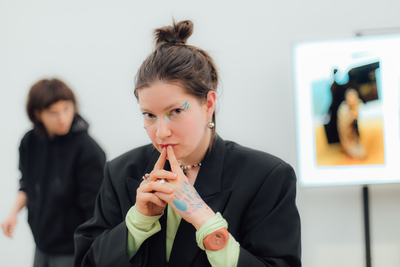
Alina Kugush, born in 1994, lives and works in St Petersburg. Received her education at the School for Young Artists (Pro Arte Foundation, Saint Petersburg, 2020), Herzen University, Department of Fine Arts (2012), Repin State Academic Institute of Painting, Sculpture and Architecture, Faculty of Graphics (2014). Alina Kugush's work explores the ways in which errors and failures affect global systems, as well as transitional states from one world to another ("Diana" and "The Force Field"). Projects about fragility and vulnerability find their form in different media. The artist feels at ease between performance, installation, video, graphics, painting and make-up practice, sometimes merging these into a single collage or event. The main working tools of Alina Kugush are metaphor, wordplay or visual banter.
View artist's pageSlava Nesterov was born in 1989 in Perm. In his projects, he uses such visual forms as painting, installation, sculpture, graphics, digital art. Nesterov's works explore the relationship between materiality, information flows, economics and technology. Considering complex connections, between which it is difficult to establish correlations, the artist displays reality in a nonlinear, multi-layered way, addresses the theme of chaos and randomness. Graduated from Perm State National Research University in the direction of Modern theories of Human Capital, and then from the Institute of Contemporary Art (ISI). Lives and works in Moscow.
View artist's page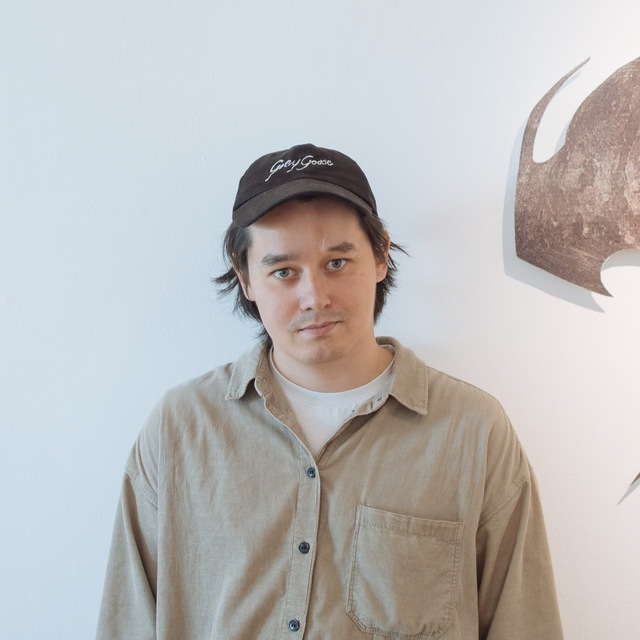
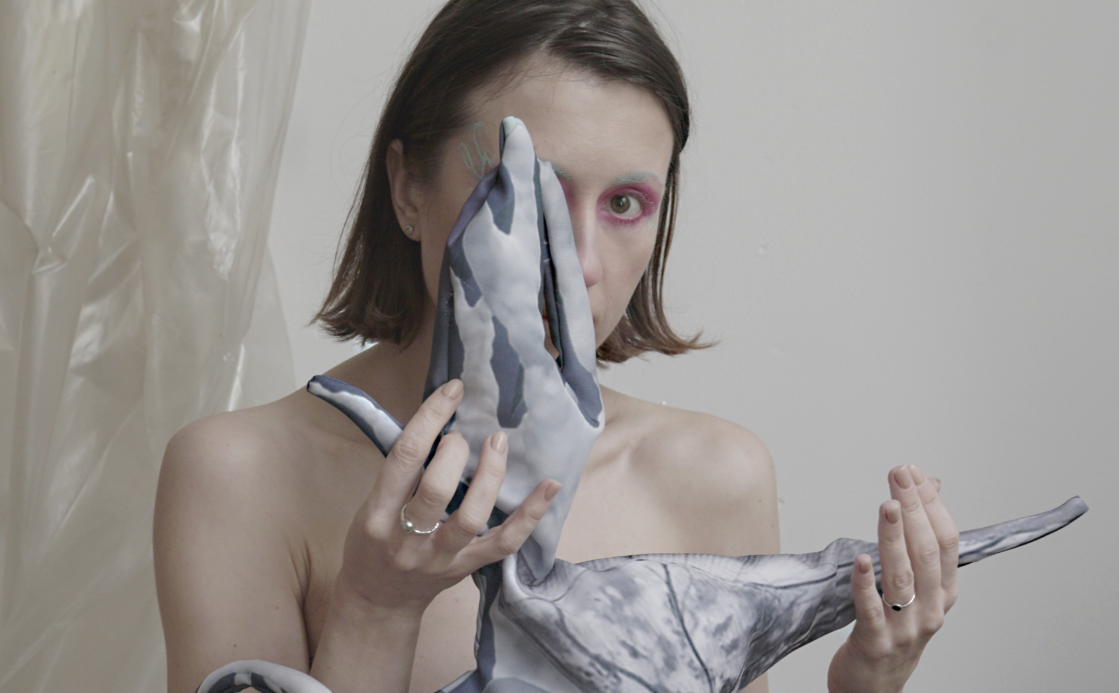
Sasha Puchkova was born in 1989 in Baikonur, Kazakhstan. She lives and works in Moscow. Interdisciplinary artist, works with graphics, ceramics, digital collage, VR, creates objects and installations. Her works are in the collections of Multimedia Art Museum (Moscow) and Micricollection (Italy).
View artist's pageSyugir, born in 1994 in Elista, Kalmykia, lives and works in Moscow. Syugir Buluktaev was born in the city of Elista in Kalmykia in 1994. Works in painting, drawing and sculpture. Studied at the Technical University of Liberec in the Czech Republic, Faculty of Design (2011-2016). In 2017, the artist held a solo exhibition at the N.N. Palmov National Museum of the Republic of Kalmykia in Elista. The works reside in private collections in Russia.
View artist's page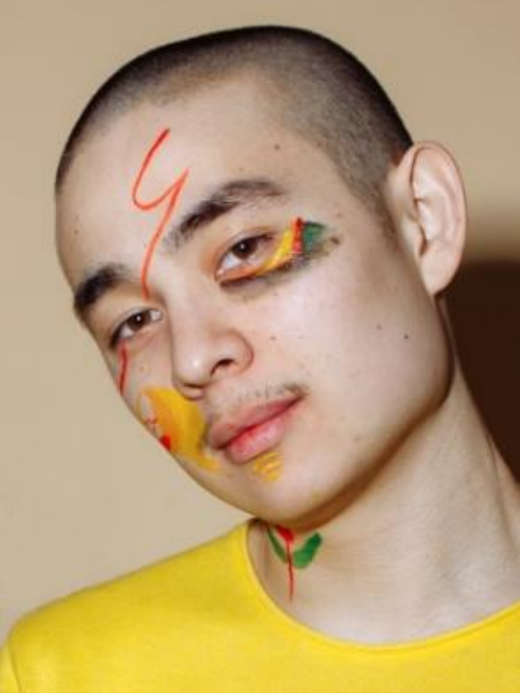
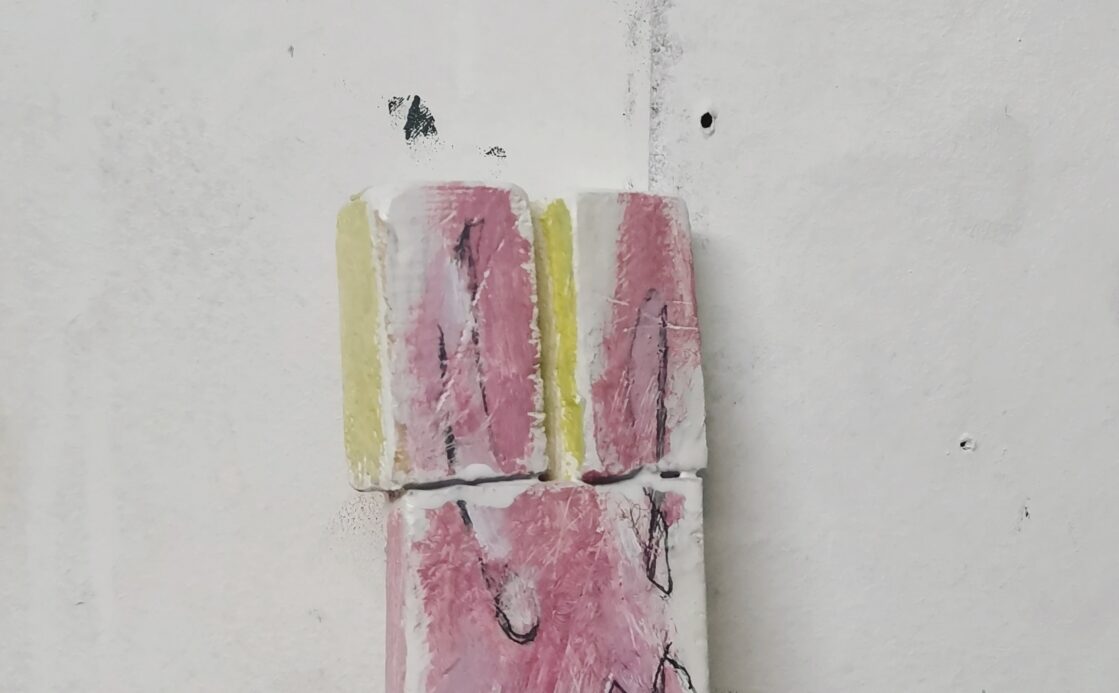
samuill marshak (Dmitry Korolev) was born in Leningrad in 1984. Works with painting, sculpture. Graduated from Herzen State Pedagogical University of Russia with a degree in General Psychology (2011). Graduated from the Ilya Repin St. Petersburg Academy of Arts, Department of Easel Painting (2017). Has been a member of the Russian Artists Association since 2018. His works are housed in the collection of the Russian Museum in St. Petersburg, as well as in private collections in Russia, the UK and China.
View artist's page